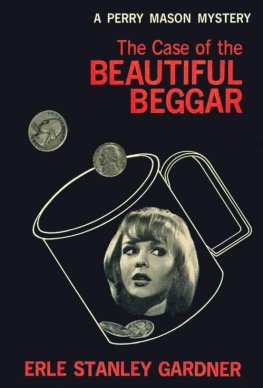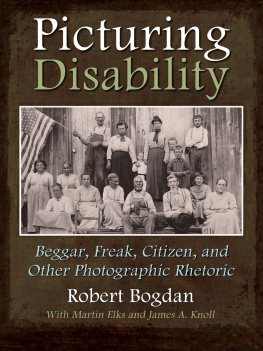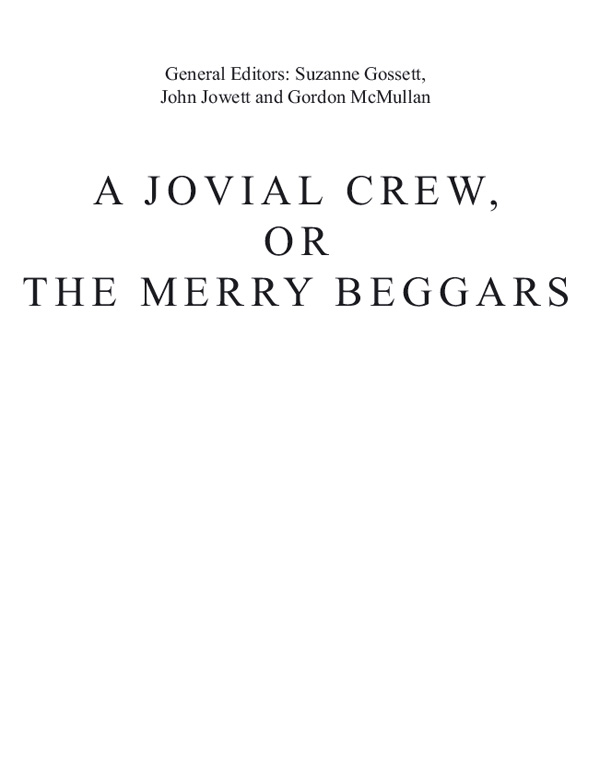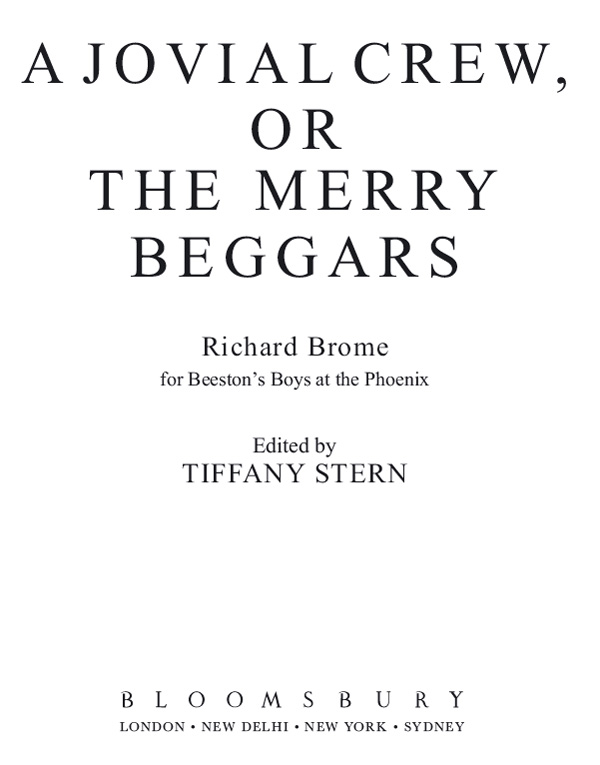THE DUCHESS OF MALFI | edited by Leah S. Marcus |
EVERYMAN and MANKIND | edited by Douglas Bruster and Eric Rasmussen |
THE ISLAND PRINCESS | edited by Clare McManus |
A JOVIAL CREW | edited by Tiffany Stern |
PHILASTER | edited by Suzanne Gossett |
THE RENEGADO | edited by Michael Neill |
THE SPANISH TRAGEDY | edited by Clara Calvo and Jess Tronch |
TIS PITY SHES A WHORE | edited by Sonia Massai |
THE TRAGEDY OF MARIAM | edited by Ramona Wray |
To Daniel Grimley
The Editor
Tiffany Stern is Professor of Early Modern Drama at Oxford University. Her publications include Rehearsal from Shakespeare to Sheridan (2000), Making Shakespeare (2004), Shakespeare in Parts , with Simon Palfrey (2007; winner of the 2009 David Bevington Award for Best New Book in Early Drama Studies) and Documents of Early Modern Performance (2009; winner of the 2010 David Bevington Award for Best New Book in Early Drama Studies). She has co-edited a collection of essays with Farah Karim-Cooper, Shakespeares Theatres and the Effects of Performance (2013), and has edited the anonymous King Leir (2001), Sheridans The Rivals (2004) and Farquhars Recruiting Officer (2010). Tiffany Stern is a General Editor of the New Mermaids series and an Advisory General Editor for the Arden Shakespeare, and is on the editorial boards of the journals SEDERI , Shakespeare Bulletin , The Hare and Shakespeare Quarterly . She is the author of over forty chapters and articles on sixteenth- to eighteenth-century theatre and is currently writing a book about theatre and fairs.
Contents
Mood and title
Character development and genre
Politics
Themes
Language
Jonson
Elizabethan literature
Jacobean and Caroline literature
Professional contemporaries
The company and theatre
Composition and production
Publication and allusions
Text
Later stage history
Later print history
Arden Early Modern Drama (AEMD) is an expansion of the acclaimed Arden Shakespeare to include the plays of other dramatists of the early modern period. The series publishes dramatic texts from the early modern period in the established tradition of the Arden Shakespeare, using a similar style of presentation and offering the same depth of information and high standards of scholarship. We define early modern drama broadly, to encompass plays written and performed at any time from the late fifteenth to the late seventeenth century. The attractive and accessible format and well-informed editorial content are designed with particular regard to the needs of students studying literature and drama in the final years of secondary school and in colleges and universities. Texts are presented in modern spelling and punctuation; stage directions are expanded to clarify theatrical requirements and possibilities; and speech prefixes (the markers of identity at the beginning of each new speech) are regularized. Each volume contains illustrations both from the period and from later performance history; a full discussion of the current state of criticism of the play; and information about the textual and performance contexts from which the play first emerged. The goal of the series is to make these wonderful but sometimes neglected plays as intelligible as those of Shakespeare to twenty-first-century readers.
AEMD editors bring a high level of critical engagement and textual sophistication to their work. They provide guidance in assessing critical approaches to their play, developing arguments from the best scholarly work to date and generating new perspectives. A particular focus of an AEMD edition is the play as it was first performed in the theatre. The title-page of each volume displays the name of the company for which the play was written and the theatre at which it was first staged: in the Introduction the play is discussed as part of a company repertory as well as of an authorial canon. Finally, each edition presents a full scholarly discussion of the base text and other relevant materials as physical and social documents, and the Introduction describes issues arising in the early history of the publication and reception of the text.
Commentary notes, printed immediately below the playtext, offer compact but detailed exposition of the language, historical context and theatrical significance of the play. They explain textual ambiguities and, when an action may be interpreted in different ways, they summarize the arguments. Where appropriate they point the reader to fuller discussions in the Introduction.
CONVENTIONS
AEMD editions always include illustrations of pages from the early texts on which they are based. Comparison between these illustrations and the edited text immediately enables the reader to see clearly what a critical edition is and does. In summary, the main changes to the base text that is, the early text, most often a quarto, that serves as the copy from which the editor works are these: certain and probable errors in the base text are corrected; typography and spelling are brought into line with current usage; and speech prefixes and stage directions are modified to assist the reader in imagining the play in performance.
Significant changes introduced by editors are recorded in the textual notes at the foot of the page. These are an important cache of information, presented in as compact a form as is possible without forfeiting intelligibility. The standard form can be seen in the following example:
31 doing of] Coxeter; of doing Q; doing Rawl
The line reference (31) and the reading quoted from the present editors text (doing of) are printed before the closing square bracket. After the bracket, the source of the reading, often the name of the editor who first made the change to the base text ( Coxeter ), appears, and then other readings are given, followed by their source (of doing Q; doing Rawl ). Where there is more than one alternative reading, they are listed in chronological order; hence in the example the base text Q (= Quarto) is given first . Abbreviations used to identify early texts and later editions are listed in the Abbreviations and References section towards the end of the volume. Editorial emendations to the text are discussed in the main commentary, where notes on emendations are highlighted with an asterisk.
Emendation necessarily takes account of early texts other than the base text, as well as of the editorial tradition. The amount of attention paid to other texts depends on the editors assessment of their origin and importance. Emendation aims to correct errors while respecting the integrity of different versions as they might have emerged through revision and adaptation.
Modernization of spelling and punctuation in AEMD texts is thorough, avoiding the kind of partial modernization that produces language from no known period of English. Generally modernization is routine, involving thousands of alterations of letters. As original grammar is preserved in AEMD editions, most modernizations are as trivial as altering booke to book, and are unworthy of record. But where the modernization is unexpected or ambiguous the change is noted in the textual notes, using the following format:













